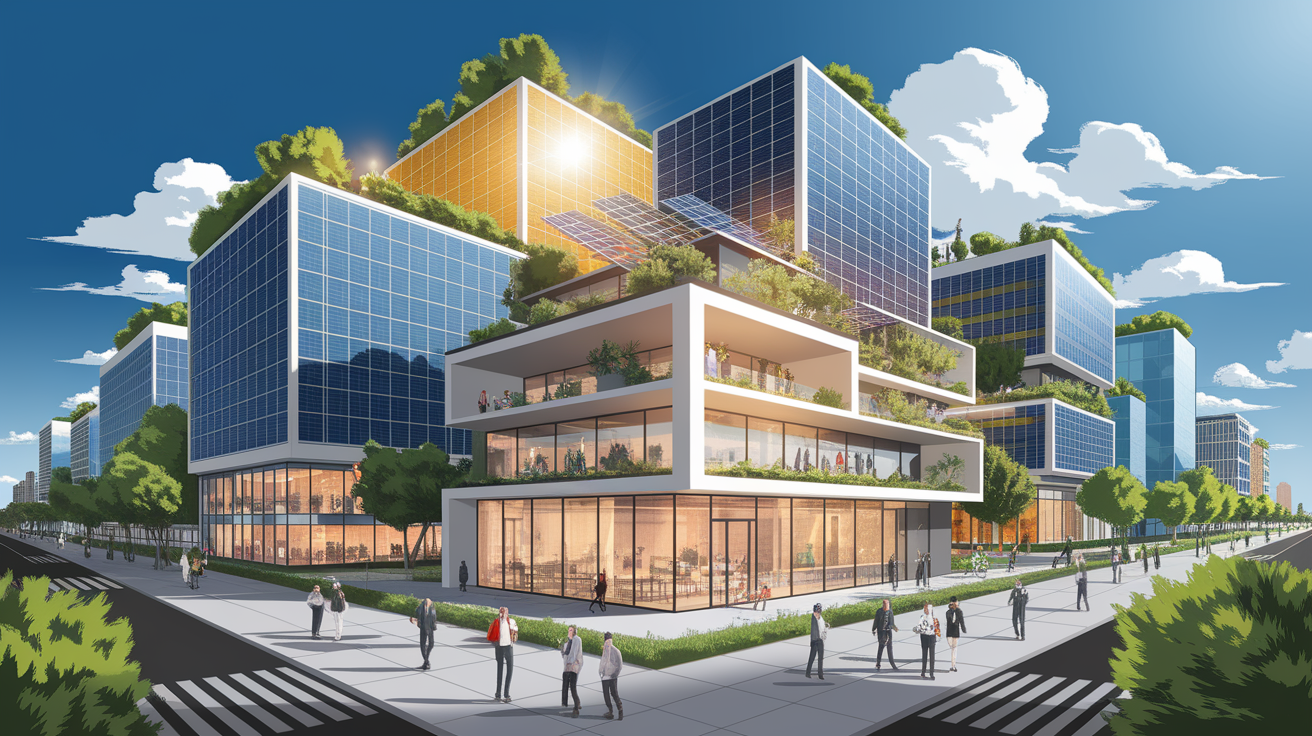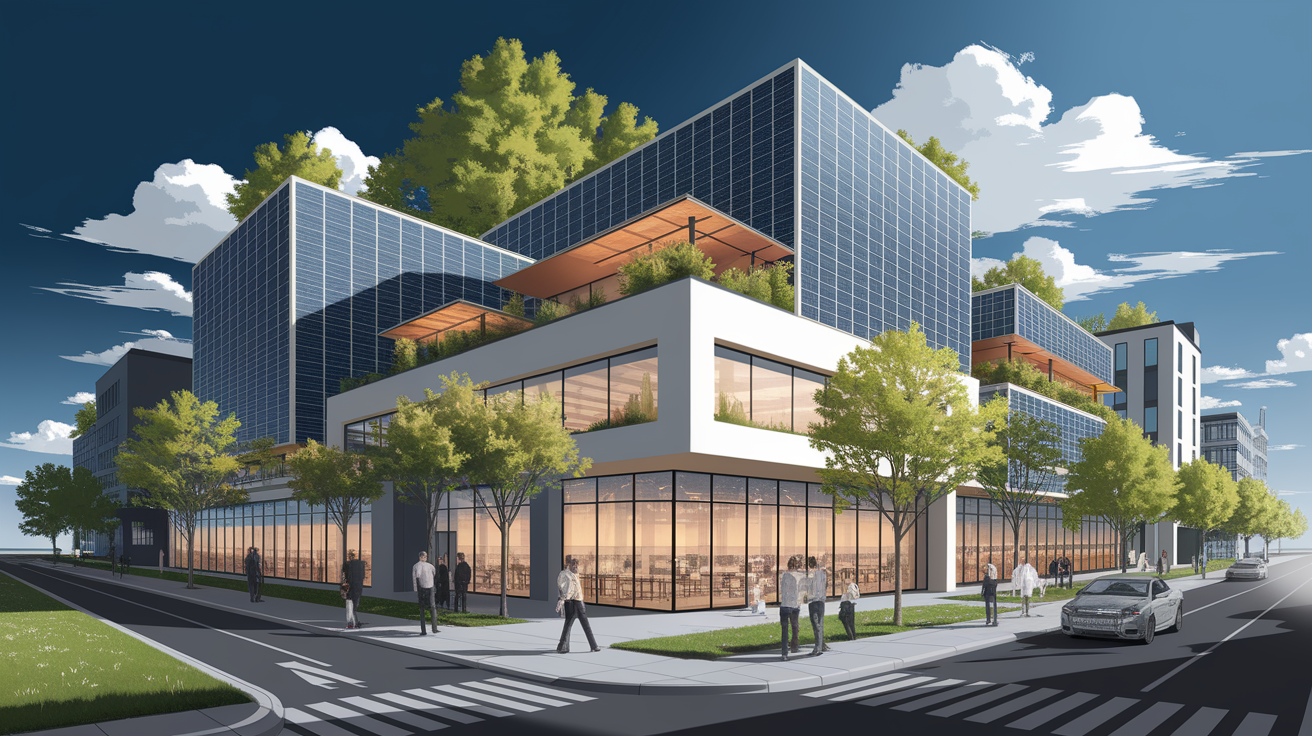Harnessing the Facade: An Overview of Building-Integrated Photovoltaics
A Brighter Tomorrow: Introduction to BIPV
As cities push toward net-zero carbon goals, Building-Integrated Photovoltaics (BIPV) are emerging as a transformative approach to solar energy integration. Unlike conventional solar panels mounted on top of existing surfaces, BIPV systems are designed as part of the building envelope itself—roofing, façades, windows, and even shading elements—delivering both structural functionality and on-site renewable energy generation. The result is an energy-harvesting exterior that not only reduces operational energy costs but also enhances the building’s aesthetic and environmental performance.

Understanding BIPV Basics
At its core, BIPV represents the fusion of photovoltaic technology with architectural components. By definition, a BIPV module replaces a conventional building element while also producing electricity. This dual-purpose approach means that removing a BIPV component requires replacing it with another element that provides the same weather protection, insulation, and structural integrity. International standards, such as those outlined by IEA-PVPS, emphasize that BIPV must function as both a legitimate building component and an energy generator, ensuring no compromise in building performance.

Common BIPV Technologies
BIPV systems leverage various solar technologies, each balancing efficiency with architectural integration:

- Crystalline Silicon (c-Si): High efficiency (15–22%), widely used for solar roofing and opaque façade panels.
- Thin-Film Technologies: Including amorphous silicon (a-Si), cadmium telluride (CdTe), and copper indium gallium selenide (CIGS). These offer flexibility in design and color but typically lower efficiencies (8–15%).
- Semi-Transparent Modules: Ideal for skylights, curtain walls, and solar glass panels. They allow daylight penetration, though higher transparency results in lower electrical yield.
The choice between these options should align with performance targets, cost constraints, and aesthetic requirements. Detailed comparisons of technologies and their architectural applications can be found through industry resources.
Key Benefits of BIPV
Integrating photovoltaics into the very structure of a building yields multifaceted advantages:

- Dual Functionality: Serves as both building envelope material and renewable energy system.
- Energy Cost Reduction: Generates electricity on-site, reducing grid dependence and energy bills.
- Space Optimization: Eliminates the need for separate installation space—critical in dense urban environments.
- Aesthetic Value: Enables sleek solar architecture without the visual intrusion of retrofit panels.
- Environmental Impact: Supports decarbonization goals by lowering building-related emissions.
The U.S. Department of Energy highlights BIPV as a solution that marries sustainable construction with architectural appeal, helping both commercial and residential buildings become active participants in energy transition.
Design and Installation Considerations
To achieve optimal performance, BIPV design must address both solar energy yield and building envelope demands:
- Orientation and Tilt: Maximize sunlight capture while maintaining intended façade aesthetics.
- Thermal Performance: Material selection impacts insulation and building heat gains/losses.
- Weatherproofing: Joints, seals, and attachment systems must prevent water ingress and maintain airtightness.
- Structural Integration: Modules must bear loads, resist wind uplift, and meet building codes.
- Electrical Integration: Routing and inverters should be discrete, efficient, and accessible for maintenance.
Adherence to technical guidelines ensures installations meet both architectural and photovoltaic performance criteria.
Real-World Applications and Case Studies
Across the globe, BIPV has been applied in innovative ways that go beyond simple rooftop solar panels:
- Solar Shingles and Roofing Systems: Residential projects using c-Si shingles blend seamlessly into traditional rooflines while delivering high energy output.
- Energy-Generating Facades: Commercial curtain wall systems with semi-transparent thin-film modules that allow daylight in while powering interior lighting systems.
- Solar Canopies and Balustrades: Public infrastructure projects, such as solar-equipped railings in transport hubs, provide shade and generate power for lighting and signage.
These applications demonstrate that BIPV is not limited to high-profile showcase projects; it is increasingly becoming a practical option for diverse building types.
Challenges and Future Outlook
Despite rapid innovation, BIPV adoption still faces challenges:
- Higher Upfront Costs: Premium materials and specialized installation increase capital expenditure.
- Efficiency Trade-offs: Design priorities like transparency can reduce energy yield.
- Knowledge Gaps: Limited awareness among architects and builders restricts creative deployment.
However, the outlook is highly optimistic. Material cost reductions, advanced photovoltaic glazing, and integrated building energy systems are poised to boost BIPV adoption rates. As cities prioritize renewable-ready construction, BIPV will play a crucial role in shaping energy-positive architecture, supported by evolving standards and public policy. Emerging concepts in solar integration are likely to make BIPV even more efficient and architecturally diverse in the coming decade.
Shining a Light on the Future: Conclusion
Building-Integrated Photovoltaics epitomize the convergence of renewable energy generation and architectural form. By transforming façades, roofs, and glazing into active energy systems, BIPV aligns sustainability goals with modern design expectations. For property owners, developers, and architects, the actionable takeaway is clear: explore BIPV early in the design process to maximize both functional and financial returns. With continuous improvements in efficiency, aesthetics, and cost competitiveness, BIPV is positioned to become a standard feature in the next generation of resilient, high-performance buildings.







